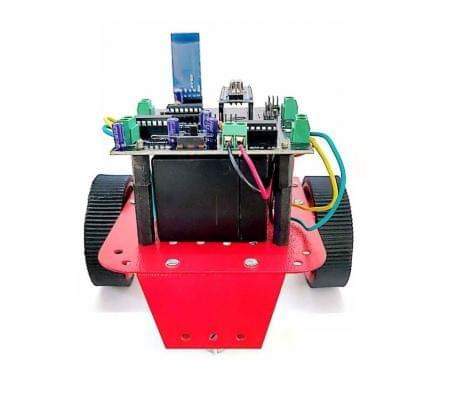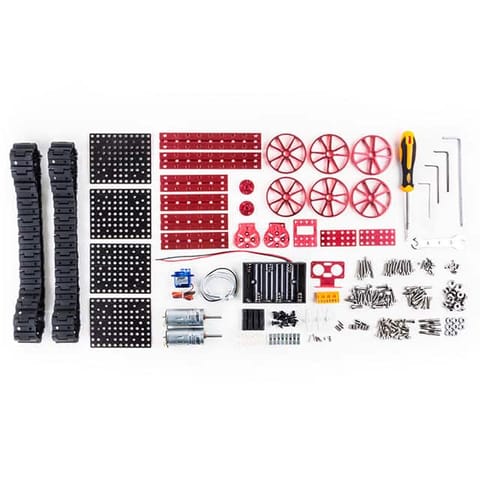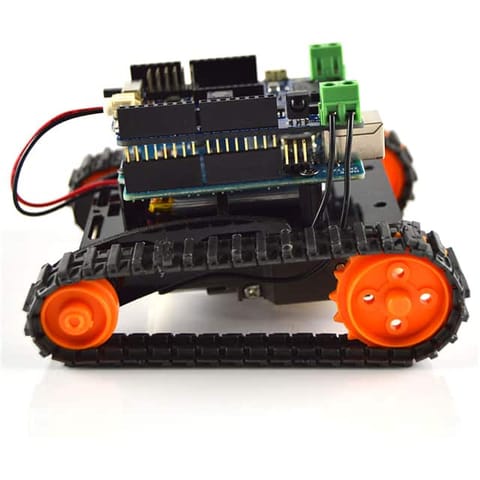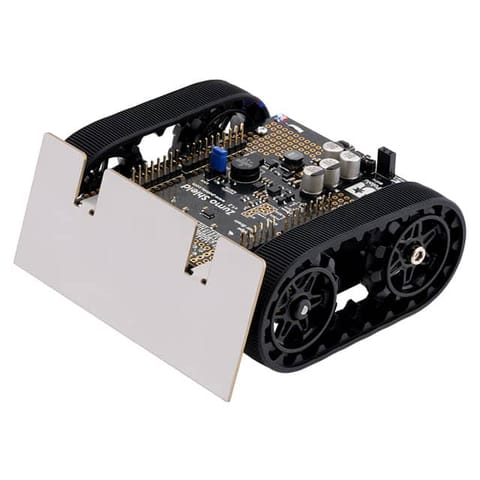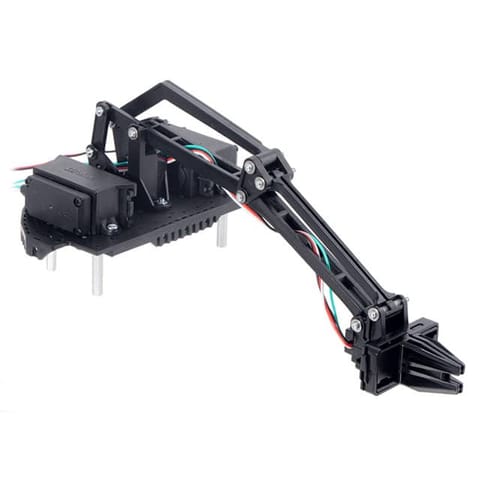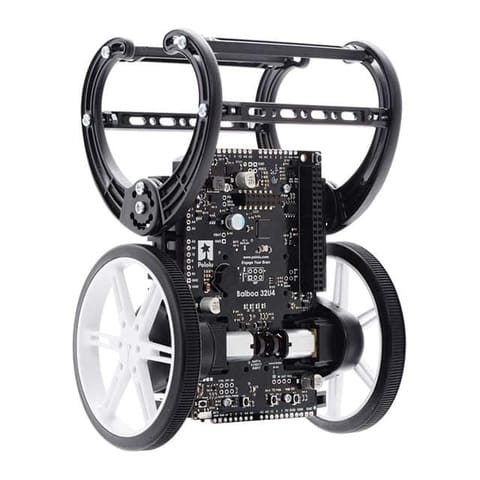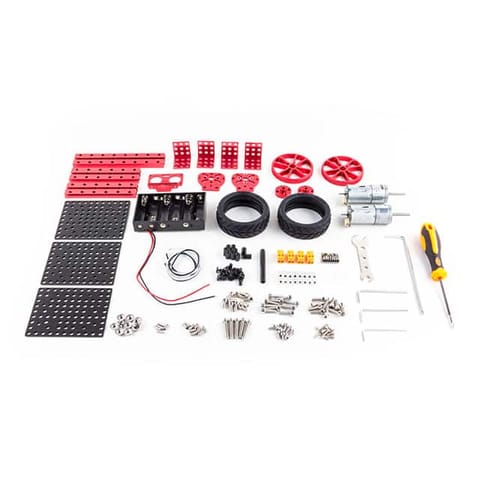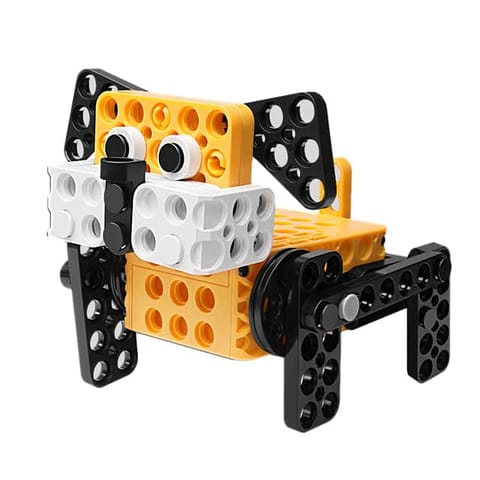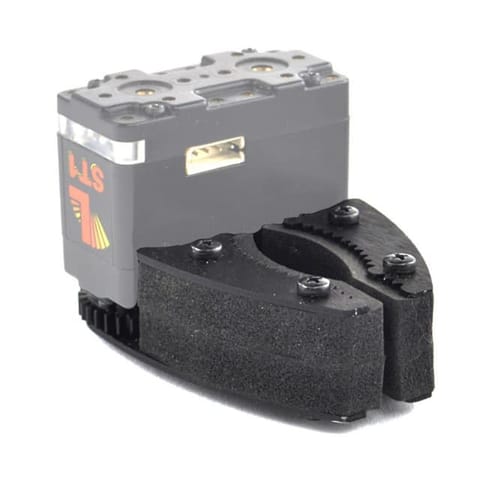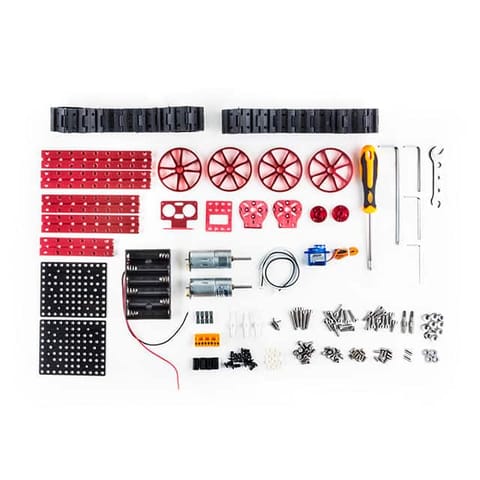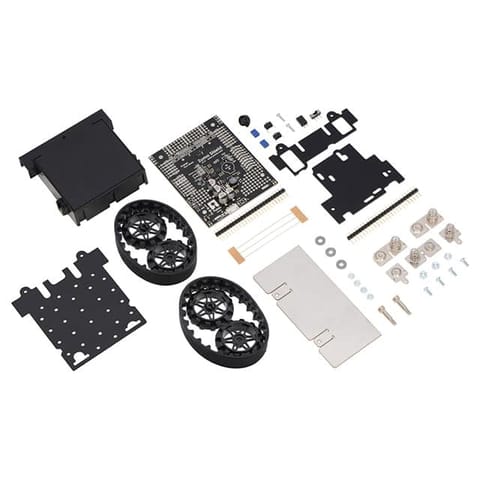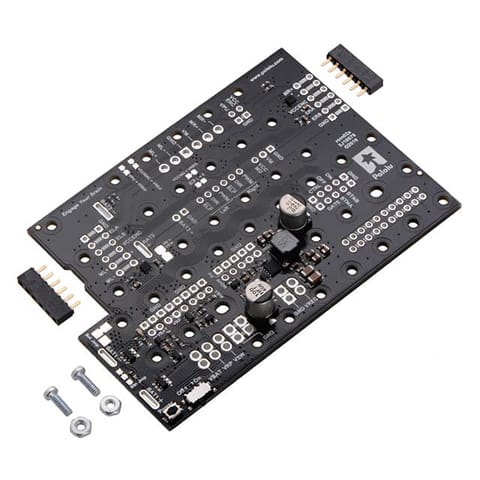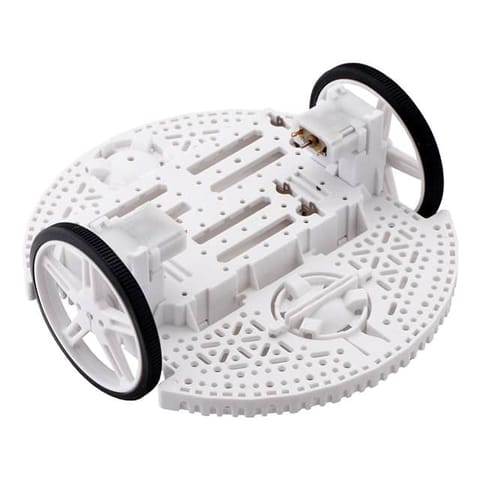- TERMINALS
- TERMINALS
- WIRELESS MODULES
- WIRELESS MODULES
- DEVELOPMENT BOARDS & KITS
- DEVELOPMENT BOARDS & KITS
- RF and Wireless
- RF and Wireless
- SINGLE BOARD COMPUTER
- SINGLE BOARD COMPUTER
- BREAKOUT BOARDS
- BREAKOUT BOARDS
- LED
- LED
- TEST AND MEASUREMENT
- TEST AND MEASUREMENT
- DEVELOPMENT BOARDS AND IC's
- DEVELOPMENT BOARDS AND IC's
- CABLES/WIRES/FANS
- CABLES/WIRES/FANS
- EMBEDDED COMPUTERS
- EMBEDDED COMPUTERS
- INDUSTRAL AUTOMATION AND CONTROL
- INDUSTRAL AUTOMATION AND CONTROL
- COMPUTER EQUIPMENT
- COMPUTER EQUIPMENT
- CONNECTORS & INTERCONNECTS
- CONNECTORS & INTERCONNECTS
- MOTORS/DRIVERS/ACTUATORS/MODULES
- MOTORS/DRIVERS/ACTUATORS/MODULES
- MAKER/DIY EDUCATIONAL
- MAKER/DIY EDUCATIONAL
- BASIC COMPONENTS
- BASIC COMPONENTS
- TOOLS & ACCESSORIES
- TOOLS & ACCESSORIES
- FPGA HARDWARE
- FPGA HARDWARE
- POWER SUPPLIES
- POWER SUPPLIES
- ROBOTICS & AUTOMATION
- ROBOTICS & AUTOMATION
- TRANSDUCERS
- TRANSDUCERS
- MEMORY CARDS & MODULES
- MEMORY CARDS & MODULES
- SOFTWARE
- SOFTWARE
Description
Arduino is a great starting point for electronics, and with a motor shield, it can also be a nice tidy platform for robotics and mechatronics. Here is a design for a full-featured motor shield that will be able to power many simple to medium-complexity projects.
HACK-AF-MOTOR-SHIELD is an Arduino NANO friendly ready to use robotics platform. It is pin compatible with Adafruit motor shield and hence one can use Adafruit’s library functions.
This L293D Motor Driver/Servo Shield for Arduino is probably one of the most versatile features in the market. Using just three Arduino pins It can drive 2 servo and 4 DC motor with onboard Ports which makes it a great shield for any robotic project.
The Shield also comes with Onboard Slot to mount Bluetooth Transceiver to provide wireless control feature to drive the robot using Smartphone.
This Arduino compatible motor Driver shield is a full-featured product that it can be used to drive 4 DC motor or two 4-wire steppers and two 5v servos. It drives the DC motor and stepper with the L293D, and it drives the servo with Arduino pin9 and pin10.
The shield contains two L293D motor drivers and one GN74HC595N Level shifter IC. The shift register expands 3 pins of the Arduino to 8 pins to control the direction of the motor drivers. The output enables the L293D is directly connected to PWM outputs of the Arduino.
The Arduino Motor Shield must be powered only by an external power supply. Because the L298 IC mounted on the shield has two separate power connections, one for the logic and one for the motor supply driver. The required motor current often exceeds the maximum USB current rating. External (non-USB) power can come either from an AC-to-DC adapter (wall-wart) or battery. The adapter can be connected by plugging a 2.1mm centre-positive plug into the Arduino’s board power jack on which the motor shield is mounted or by connecting the wires that lead the power supply to the Vin and GND screw terminals, taking care to respect the polarities.
To avoid possible damage to the Arduino board on which the shield is mounted, we recommend using an external power supply that provides a voltage between 7 and 12V. If your motor requires more than 9V we recommend that you separate the power lines of the shield and the Arduino board
L293D is a monolithic integrated, high voltage, high current, 4-channel driver. Basically, this means using this chip you can use DC motors and power supplies of up to 36 Volts, that some pretty big motors and the chip can supply a maximum current of 600mA per channel, the L293D chip is also what’s known as a type of H-Bridge. The H-Bridge is typically an electrical circuit that enables a voltage to be applied across a load in either direction to an output, e.g. a motor.
Firmware
- Arduino Stepper/Servo software library with microstepping support.
To install, click on Download in the top right corner, select zip and uncompress the folder.
Rename the folder to AF-motor (check that the renamed folder contains the .cpp and .h files) and install into the Arduino sketches/libraries folder. For information on how to use and install libraries, see our tutorial! This version now works with the Mega. Public domain! - AccelStepper library with AFMotor support. This library allows for advanced stepper control including acceleration and deceleration, and concurrent stepper control!
To install, click on Download in the top right corner, select zip and uncompress the folder.
Rename the folder to AF-motor (check that the renamed folder contains the .cpp and .h files) and install into the Arduino sketches/libraries folder.
Features :
- Pin compatible with Adafruit Motor Shield
- Pin header to connect sensors and actuators.
- Surg Current Protection for IC L293D.
- Onboard On/Off Switch.
- On-board slot to connect HC-05/HC-06 Bluetooth modules for Wireless control via Smartphone
- 4 H-Bridges: L293D chipset provides 0.6A per bridge (2A peak) with thermal shutdown protection, internal kickback protection diodes. Can run motors on 5VDC to 12VDC.
- Drive 4 bi-directional DC motors with individual 8-bit speed selection (so, about 0.5% resolution)
- Drive 2 Servo motors (unipolar or bipolar) with single coil, double coil or interleaved stepping.
- Pull down resistors keep motors disabled during power-up
- Big terminal block connectors to easily hook up wires (18-26AWG) and power
- Arduino reset button brought up top
- 2-pin terminal block and jumper to connect external power, for separate logic/motor supplies
- Download the easy-to-use Arduino software library, check out the examples and you’re ready to go!
TT-PSK-513
- Home
- ROBOTICS & AUTOMATION
- HACK AF L293D Motor Driver/Servo Shield for Arduino Nano
HACK AF L293D Motor Driver/Servo Shield for Arduino Nano
SIZE GUIDE
- Shipping in 10-12 Working days
- http://cdn.storehippo.com/s/59c9e4669bd3e7c70c5f5e6c/ms.products/5d5babf7e4833666dcf251d8/images/5d5babf7e4833666dcf251d9/5d5bab76027f8a66db787024/5d5bab76027f8a66db787024.jpg
Description of product
Description
Arduino is a great starting point for electronics, and with a motor shield, it can also be a nice tidy platform for robotics and mechatronics. Here is a design for a full-featured motor shield that will be able to power many simple to medium-complexity projects.
HACK-AF-MOTOR-SHIELD is an Arduino NANO friendly ready to use robotics platform. It is pin compatible with Adafruit motor shield and hence one can use Adafruit’s library functions.
This L293D Motor Driver/Servo Shield for Arduino is probably one of the most versatile features in the market. Using just three Arduino pins It can drive 2 servo and 4 DC motor with onboard Ports which makes it a great shield for any robotic project.
The Shield also comes with Onboard Slot to mount Bluetooth Transceiver to provide wireless control feature to drive the robot using Smartphone.
This Arduino compatible motor Driver shield is a full-featured product that it can be used to drive 4 DC motor or two 4-wire steppers and two 5v servos. It drives the DC motor and stepper with the L293D, and it drives the servo with Arduino pin9 and pin10.
The shield contains two L293D motor drivers and one GN74HC595N Level shifter IC. The shift register expands 3 pins of the Arduino to 8 pins to control the direction of the motor drivers. The output enables the L293D is directly connected to PWM outputs of the Arduino.
The Arduino Motor Shield must be powered only by an external power supply. Because the L298 IC mounted on the shield has two separate power connections, one for the logic and one for the motor supply driver. The required motor current often exceeds the maximum USB current rating. External (non-USB) power can come either from an AC-to-DC adapter (wall-wart) or battery. The adapter can be connected by plugging a 2.1mm centre-positive plug into the Arduino’s board power jack on which the motor shield is mounted or by connecting the wires that lead the power supply to the Vin and GND screw terminals, taking care to respect the polarities.
To avoid possible damage to the Arduino board on which the shield is mounted, we recommend using an external power supply that provides a voltage between 7 and 12V. If your motor requires more than 9V we recommend that you separate the power lines of the shield and the Arduino board
L293D is a monolithic integrated, high voltage, high current, 4-channel driver. Basically, this means using this chip you can use DC motors and power supplies of up to 36 Volts, that some pretty big motors and the chip can supply a maximum current of 600mA per channel, the L293D chip is also what’s known as a type of H-Bridge. The H-Bridge is typically an electrical circuit that enables a voltage to be applied across a load in either direction to an output, e.g. a motor.
Firmware
- Arduino Stepper/Servo software library with microstepping support.
To install, click on Download in the top right corner, select zip and uncompress the folder.
Rename the folder to AF-motor (check that the renamed folder contains the .cpp and .h files) and install into the Arduino sketches/libraries folder. For information on how to use and install libraries, see our tutorial! This version now works with the Mega. Public domain! - AccelStepper library with AFMotor support. This library allows for advanced stepper control including acceleration and deceleration, and concurrent stepper control!
To install, click on Download in the top right corner, select zip and uncompress the folder.
Rename the folder to AF-motor (check that the renamed folder contains the .cpp and .h files) and install into the Arduino sketches/libraries folder.
Features :
- Pin compatible with Adafruit Motor Shield
- Pin header to connect sensors and actuators.
- Surg Current Protection for IC L293D.
- Onboard On/Off Switch.
- On-board slot to connect HC-05/HC-06 Bluetooth modules for Wireless control via Smartphone
- 4 H-Bridges: L293D chipset provides 0.6A per bridge (2A peak) with thermal shutdown protection, internal kickback protection diodes. Can run motors on 5VDC to 12VDC.
- Drive 4 bi-directional DC motors with individual 8-bit speed selection (so, about 0.5% resolution)
- Drive 2 Servo motors (unipolar or bipolar) with single coil, double coil or interleaved stepping.
- Pull down resistors keep motors disabled during power-up
- Big terminal block connectors to easily hook up wires (18-26AWG) and power
- Arduino reset button brought up top
- 2-pin terminal block and jumper to connect external power, for separate logic/motor supplies
- Download the easy-to-use Arduino software library, check out the examples and you’re ready to go!
NEWSLETTER
Subscribe to get Email Updates!
Thanks for subscribe.
Your response has been recorded.
INFORMATION
ACCOUNT
ADDRESS
Tenet Technetronics# 2514/U, 7th 'A' Main Road, Opp. to BBMP Swimming Pool, Hampinagar, Vijayanagar 2nd Stage.
Bangalore
Karnataka - 560104
IN
Tenet Technetronics focuses on “Simplifying Technology for Life” and has been striving to deliver the same from the day of its inception since 2007. Founded by young set of graduates with guidance from ardent professionals and academicians the company focuses on delivering high quality products to its customers at the right cost considering the support and lifelong engagement with customers. “We don’t believe in a sell and forget model “and concentrate and building relationships with customers that accelerates, enhances as well as provides excellence in their next exciting project.


